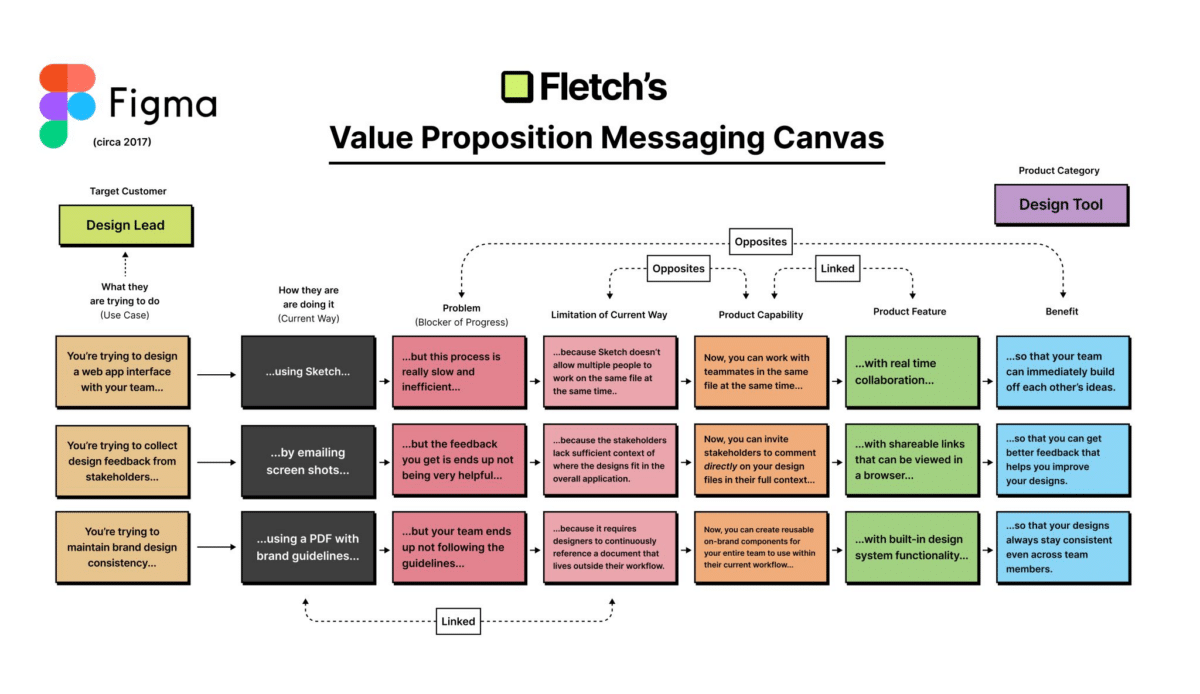Sales enablement done well can take your sales team from good to exceptional.
And you know it well — otherwise you wouldn’t be reading this lines (nor between them).
However, in our world, failure isn’t caused by a lack of enablement planning or execution. In short: it stems from a lack of clear directives and follow-through. 🫡
Accountability and behavior change, driven by the right enablement strategies, are what make a real impact in any revenue enablement project.
A successful sales enablement project equips your team with the tools, knowledge, and skills they need to succeed. It optimizes your sales process, elevates customer interactions, and drives the kind of revenue predictability your CFO needs.
But to get there, careful planning, resources, and follow-through are essential.
In this post, we’ll explore the telltale signs that your team needs enablement, the key questions to ask before starting, and why holding teams accountable for behavior change is the real key to success.
Spotting the Signs You Need Better Revenue Enablement
Even if they’re not explicitly saying so, your sales team is struggling. Think of these struggles as your sales process sending out an 🆘 — these are telltale signs that it might be time for a sales enablement program.
But remember:
Failure doesn’t stem from a lack of planning; it’s a lack of clear directive and follow-through. When leadership doesn’t provide clear accountability and behavioral change isn’t enforced, enablement efforts fall flat.
Stagnating or Declining Sales Numbers
If you’re noticing flat or decreasing sales despite increased effort from your team (and more money spent in marketing) it’s time to pay attention.
This often manifests as longer sales cycles, decreased win rates, or a widening gap between top performers and the rest of the team.
It’s a sign that your sales process might need some fine-tuning. In our world, failure to improve in these areas is often the result of leaders not driving the right behaviors or creating the right accountability and follow-through, not the enablement strategy itself.
Difficulty Articulating Value Propositions
When your go-to-market teams struggle to explain why your product or service is the best choice, it’s a major red flag. This challenge often leads to lost opportunities and an inability to stand out from competitors. You might notice an increase in customer objections or prospects getting stuck in the sales funnel.
Here’s the top 5 root causes I’ve seen in my experience that make companies (aka, people!) fail at articulating value props.
- Overly Technical Language: Companies, especially in technical fields like technology, often use complex jargon that confuses potential customers. The benefits of their solutions get lost in the technical details, making it hard for non-experts to understand the value.
- Vague or Unclear Messaging: Many businesses fail to spend adequate time developing a clear, concise value proposition. As a result, their messaging lacks focus, leading to confusion about the true benefits of their product or service.
- Failure to Address Customer Needs: Some companies focus too much on the features of their products, rather than how those features solve specific customer problems or create tangible benefits. This disconnect leaves prospects wondering why they should choose that company over competitors.
- Balancing Short-Term and Long-Term Benefits: It can be challenging to communicate both immediate and long-term value in a way that resonates with diverse stakeholders. Focusing too heavily on one or the other leads to a misalignment with the audience’s priorities.
- Inconsistent Internal Understanding: If employees themselves can’t clearly articulate the value proposition, it’s unlikely the message will resonate externally. Misalignment between departments can lead to inconsistent messaging across touchpoints.
Talking about a solution here — I’m personally a big fan (and user) of FletchPMM Value Proposition messaging canvas and have used it both at Mediafly and previously at Dooly.ai.

High Turnover Rates
If your sales team has a revolving door, it’s more than just an HR headache. High turnover can indicate that your sellers feel ill-equipped to perform their jobs effectively or see limited opportunities for growth.
This constant churn not only impacts your bottom line but also creates a cycle of continuous onboarding that drains resources.
Once again, without clear accountability, new hires can feel unsupported, and tenured employees may resist the changes and adaptability necessary for success.
Misalignment Between Departments
This one touches on the previous point. When sales, marketing, and product development aren’t on the same page, it hinders sales success. Look out for signs like:
- Inconsistent messaging across customer touchpoints.
- Sales teams not effectively using marketing content
- Difficulty in communicating customer feedback to product teams
- Lack of coordination in go-to-market strategies for new products or features
These misalignments often stem from leaders not taking a strong enough stance on collaboration. In areas where your organization specializes, having a say in product development and go-to-market strategies is crucial.
Otherwise, misaligned goals and poor communication will persist, making it harder for teams to adopt changes and work in harmony.
Here we come 👇
Critical Questions to Ask (and Answer) in Your Go-To-Sales Enablement Journey

If you’re reading this lines, you’re working on this space and you well know the benefits of sales enablement are clear.
So… it’s crucial to approach them strategically.
Jumping into a project without proper planning and buy-in can lead to wasted resources, misaligned efforts, and disappointing results.
This is where asking — and thoroughly answering — the following questions is invaluable.
🎯 What are the specific goals of this enablement project?
Start by clearly defining what you want to achieve with your sales enablement initiative. Having specific, measurable goals will guide your strategy and help track progress.
Consider the following areas when setting your objectives:
- Performance metrics: Are you looking to increase win rates, shorten the sales cycle, or boost average deal size? Set concrete targets for improvement.
- Skills development: Do you want to enhance product knowledge, improve objection handling, or strengthen negotiation skills? Identify key competencies to focus on.
- Customer engagement: Are you aiming to improve customer satisfaction scores, increase repeat business, or enhance the overall customer experience?
- Internal alignment: Do you need to improve collaboration between sales and marketing teams or streamline communication with product development?
- Efficiency improvements: Are you seeking to reduce time spent on non-selling activities, improve CRM adoption, or optimize your sales process?
- New initiative support: Are you launching a new product or entering a new market that requires specific enablement support?
When setting these goals, make sure they are SMART: Specific, Measurable, Achievable, Relevant, and Time-bound. For instance, instead of a vague goal like “improve sales performance,” you might aim to “increase the team’s average win rate from 20% to 25% within the next six months.”
💁🏻♀️ Who are the key stakeholders?
Identifying and engaging the right stakeholders from the beginning is critical for the success of your project. Consider the following:
- What roles and personas are involved in the project? This includes sales reps, managers, executives, subject matter experts, and dedicated project managers. Understand what’s in it for each of these groups beyond the overall business benefits.
- Can you identify champions within your organization? These individuals play a crucial role in acting as early adopters, providing valuable feedback, and encouraging adoption among their colleagues.
- Do you have buy-in from sales management and executive leadership? Clearly articulate how the enablement project aligns with broader business goals, provide regular updates on progress, and involve them in key decisions to get them on board.
🌽 What resources are required?
Assess the resources you’ll need to implement your sales enablement project effectively. This could include:
- Learning and development resources: live training, video content, written documentation, and visual aids like slide decks that cater to different learning styles
- Technology and tools: learning management system (LMS), content management, sales playbook tools, customer relationship management (CRM)
- Content creation resources: writers, graphic designers, video producers for developing high-quality, engaging materials
- Data and analytics tools: software for tracking KPIs and measuring the impact of enablement efforts
- Budget: funds for technology investments, content creation, possible external resources, and ongoing maintenance of the enablement program
☑️ What are our checkpoints?
Establishing clear checkpoints is essential for maintaining momentum and accountability throughout your enablement project. These allow you to assess progress, make necessary adjustments, and keep stakeholders informed.
- Define a clear timeline, breaking your project into phases with specific start and end dates.
- Set regular checkpoints at a frequency that makes sense — weekly for short-term projects or monthly for longer initiatives often works well.
- Align checkpoints with key milestones.
- Use a mix of checkpoint types, including status update meetings, milestone reviews, stakeholder presentations, and user feedback sessions.
- Create a visual timeline to help everyone understand and track the project’s progression.
🔣 What metrics will be used to measure success?
Defining success metrics upfront will help you track progress, demonstrate the value of your enablement project, and make data-driven decisions. Take into account quantitative metrics like:
- Sales performance: win rates, sales cycle length, average deal size, revenue per sales rep, quota attainment
- Activity: number of customer interactions, pipeline velocity, time spent on selling activities vs. administrative tasks
- Adoption and engagement: usage rates of new tools or processes, completion rates of training modules, time spent engaging with enablement content
- Customer satisfaction: Net Promoter Score (NPS), customer retention rates
Make sure to establish a regular cadence for reviewing these metrics, using dashboards or reports to visualize progress towards goals. User feedback also provides valuable insights — engage top adopters to identify best practices and success stories, and interview non-adopters to understand their hesitations and address concerns directly.
🆘 What potential challenges might arise?
Anticipating roadblocks is crucial for the success of your enablement initiative. By identifying challenges early, you can develop strategies to address them proactively. Consider the following:
- Is your team aware of the challenges you’re trying to address with this enablement project? If not, how will you create that awareness effectively?
- Are all key stakeholders aligned on the project’s goals and approach?
- Do you expect resistance to change, or is the team generally bought in? Understanding the current sentiment can help you tailor your approach.
- Have you accounted for potential budget limitations or time management challenges? Develop contingency plans for scaled-back versions of the project if needed.
- Are there potential technical issues with new tools or systems? Work closely with IT to ensure smooth integration.
- How will you maintain engagement and adapt to feedback beyond the initial rollout? Plan for ongoing reinforcement and be prepared to make adjustments based on user feedback and performance data.
- Have you considered how you’ll provide ongoing support and resources? This might include refresher training or establishing a dedicated sales enablement function.
Rev Up Your Sales Engine
By tackling these questions head-on before you kick off your sales enablement project, you’re not just preparing for a smooth ride — you’re tuning the sales machine for peak performance.
Remember, the key to successful enablement lies not just in the quality of your training materials, but in how well you understand and address the unique needs and dynamics of your sales organization.

Comments are closed.